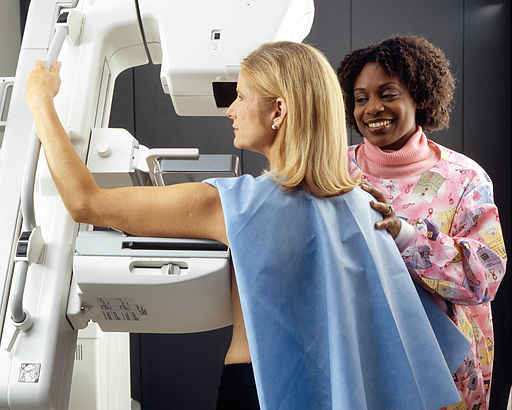The Role of Tech in Transforming Nursing: A Look Through Time

It is impossible to overstate the enormous symbiotic relationship between modern medicine and technology. Without a scientific understanding of the body and the technology to deal with diseases and conditions like cancer, arthritis, brain tumours, or acute conditions like heart attacks, countless people would die from what we understand today as “preventable” or at least “treatable” sicknesses.
Even into the education sector, medical knowledge and qualifications have never been more accessible, with online msn fnp, doctor, physiotherapy, and therapist programs readily available all over America, to anyone, anywhere.
Yet where did this knowledge come from? How did we go from climbing out of the trees to performing complex procedures on living humans to cut out a sickness? How did the role of medical staff change over time? Today, we’re taking a look at the medical history of the world, and at the distances that nurses have traveled from the earliest days of medicine to the age of modernity.
The Ancient World
Although the remains of neolithic societies show evidence of some medical knowledge, it was not until the time of our ancient ancestors that formal nursing and any associated tech came onto the scene. Rome, though a highly vaunted civilization, did not practice medicine as a whole. Society was largely concerned with the artistry of infrastructure, politics, and the military, and the sick were simply left to their own devices, said to be experiencing the “wrath of the Gods.”
Rome had a glut of foreign doctors working there, but it wasn’t until the 2nd Century BC that nursing in Rome took off, as Greek and Alexandrian doctors made their way to Rome (sometimes as POWs) and revolutionized medicine with some of the world’s first scientific study.
At this point, nurses took the form of the nosocomial and were predominantly men, with women being relegated uniformly to the role of a midwife. Not too much is known about the medical technology of this time, however, archaeologists have discovered remains of records that seem to suggest that plants were used as medicines, including extensive use of opium to relieve internal pain, and even rubbing it on the gums of teething babies. The practice of drilling a hole into the skull (called trepanning) was also common, and bronze surgical tools have been uncovered such as scalps, drills, scoops, and forceps.
The Middle Ages

Image Credit: Jair Lázaro on Unsplash
Aside from the Parabolani male nurse group that helped treat patients during the black plague, the medieval Catholic church was the hotspot for nurses. Have you ever wondered why nurses are sometimes called “sisters?” It’s because, during the Middle Ages, the Catholic church taught that caring for the sick was a Christian’s moral duty. As a result, convents and monasteries became hotbeds of medical expertise, with nuns (sisters) serving as nurses.
Despite their lack of modern scientific knowledge, Medieval people found a way to expand and grow their healthcare system. The first pharmacy opened in Baghdad in the year 754, while the first eyeglasses came to light in 1305. Knowledge of the anatomy and early dissection attempts were made as far back as 1315, and the first formal, guided medical training took place during this era.
Early Modern Nursing
From the 1700s onwards, medical science continued to proliferate. For nurses, this meant the opening of the first dedicated nursing school, established by Florence Nightingale in 1860. The facility called The Florence Nightingale School of Nursing in London, blazed a trail, as others soon followed suit and soon nursing schools were popping up all over London.
In the twentieth century, the world wars forced nursing practice and tech to again evolve. Among these were the prioritization of wound treatment, antiseptic cleaning techniques, developed wound dressings, as well as the development of skin grafts, as well as several medical admin developments.
Today
Today medical science has progressed to heights unimaginable by our forebears. Modern nurses have incredible access to devices and gizmos that streamline the healthcare process like never before. These range from communication devices that allow nurses to contact each other and collaborate from completely different areas of the facility they work.
Additionally, the digitizing of patient information to make electronic Health Records (EHR) has streamlined the creation of treatment plans, improving the decision-making capabilities when handling a patient’s care. The use of a smart bed allows patients to lie in a position that is comfortable for them but also practical for the nurse to do their duties.
Even the chaos of recent years has led to technological advancements. During the COVID-19 pandemic, people had to use telehealth to visit the doctor. It seems now that practice is here to stay, as telehealth calls with primary care nurses are a frequently accessed care aid for non-critical care.

Image Credit: Maskmedicare Shop on Unsplash
What the Future Holds
It’s not a secret that no one can predict the future, but we can examine the present and make some decent guesses. As AI looms on the horizon of every major industry, it seems fair that its role in the medical industry would be expected as well. In some cases AI is already present in medicine, albeit not common, however, the precedent is there.
The world of medical history is a fascinating study, the pursuit of expended health, life, recovery, and rehabilitation throughout the ages tracks a journey that is inherently both spiritual and scientific. As research continues and knowledge develops, both nurses and patients can enjoy the vast array of technological developments that follow, both make the job of nursing easier, providing better healthcare outcomes and allowing patients to enjoy and relatively stress-free period of recovery and healing.
(Devdiscourse's journalists were not involved in the production of this article. The facts and opinions appearing in the article do not reflect the views of Devdiscourse and Devdiscourse does not claim any responsibility for the same.)










